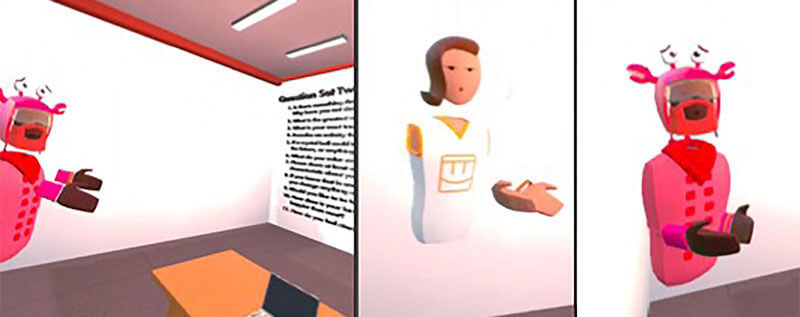VR avatars rival online interactions in creating closeness

WEST LAFAYETTE, Ind. – Can virtual reality (VR) avatars foster meaningful human connections as effectively as that of other online communication methods, and even real-life interactions? A Purdue University case study suggests they can. The study also demonstrates the potential for VR avatar use to reduce race and gender bias.
A study at Illinois State University found that previously unacquainted people can create meaningful connections that generate feelings of closeness when they meet and interact exclusively online. The finding was reassuring, given that online human interaction — professional and personal — is a fact of modern, post-Covid life.
A recent Purdue University case study offers further reassurance, providing evidence that when online communication happens solely between avatars in a VR realm, human connections can be equally strong and positive. In fact, the findings show that connections can be just as meaningful between people whose avatars aren’t even human.
“We hypothesized that outcomes wouldn’t differ regardless of whether the interacting avatars appeared to be human or not and regardless of whether there was a match or a mismatch in avatar type between interactants,” said Chris Agnew, the study’s author and a professor of psychological sciences in Purdue’s College of Health and Human Sciences. “Our results showed that closeness and related outcomes can be generated and experienced in virtual reality regardless of the stylized avatar types we used in the study.”
The study paired 204 undergraduate students who had never met. Members of each pair were situated on different floors of a building and given headsets to wear when meeting and interacting with their counterparts in an immersive VR environment. Using their own voices to communicate, some appeared as human avatars while others were represented as non-human avatars best described as “crab-things.”

“Avatar appearance did not have an influence on the generation of closeness,” Agnew said. “Whether the avatar you interact with is humanoid in appearance or something quite non-humanoid looking, people still develop a sense of closeness.”
A previous study Agnew conducted featuring human avatars showed that “you can develop meaningful, close relationships with a stranger in VR — just as close as you can when interacting in traditional technology-mediated ways, such as by phone or video chat.”
Agnew suggests that if non-human VR avatars allow people to meaningfully connect, they may have untapped potential for mitigating bias by eliminating gender, race and ethnicity cues from interactions.
To illustrate that potential, Agnew cited a Harvard University study that showed how implicit gender bias had once affected how musicians were chosen during orchestra auditions: “In open auditions, it was recognized that judges favored male musicians over female musicians, so the percentage of female orchestra members was relatively small. When they turned to blind auditions, with judges hearing but not seeing the performers, the gender disparity largely disappeared. So, when you see someone in avatar form you may not know that the person behind that avatar is of a certain race or gender, which could eliminate harms associated with biases based on these categorizations.”
About Purdue University
Purdue University is a top public research institution developing practical solutions to today’s toughest challenges. Ranked in each of the last five years as one of the 10 Most Innovative universities in the United States by U.S. News & World Report, Purdue delivers world-changing research and out-of-this-world discovery. Committed to hands-on and online, real-world learning, Purdue offers a transformative education to all. Committed to affordability and accessibility, Purdue has frozen tuition and most fees at 2012-13 levels, enabling more students than ever to graduate debt-free. See how Purdue never stops in the persistent pursuit of the next giant leap at https://stories.purdue.edu
Writer/Media contact: Amy Raley, araley@purdue.edu
Source: Christopher Agnew, agnew@purdue.edu